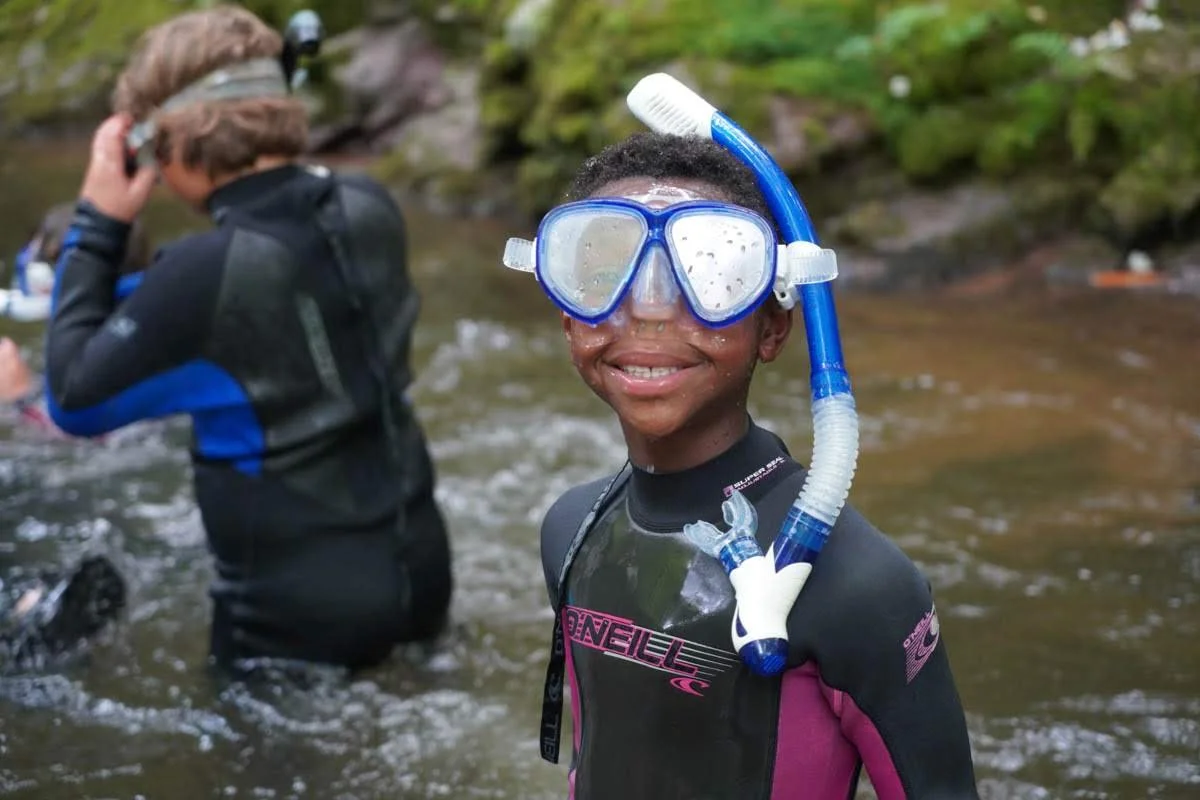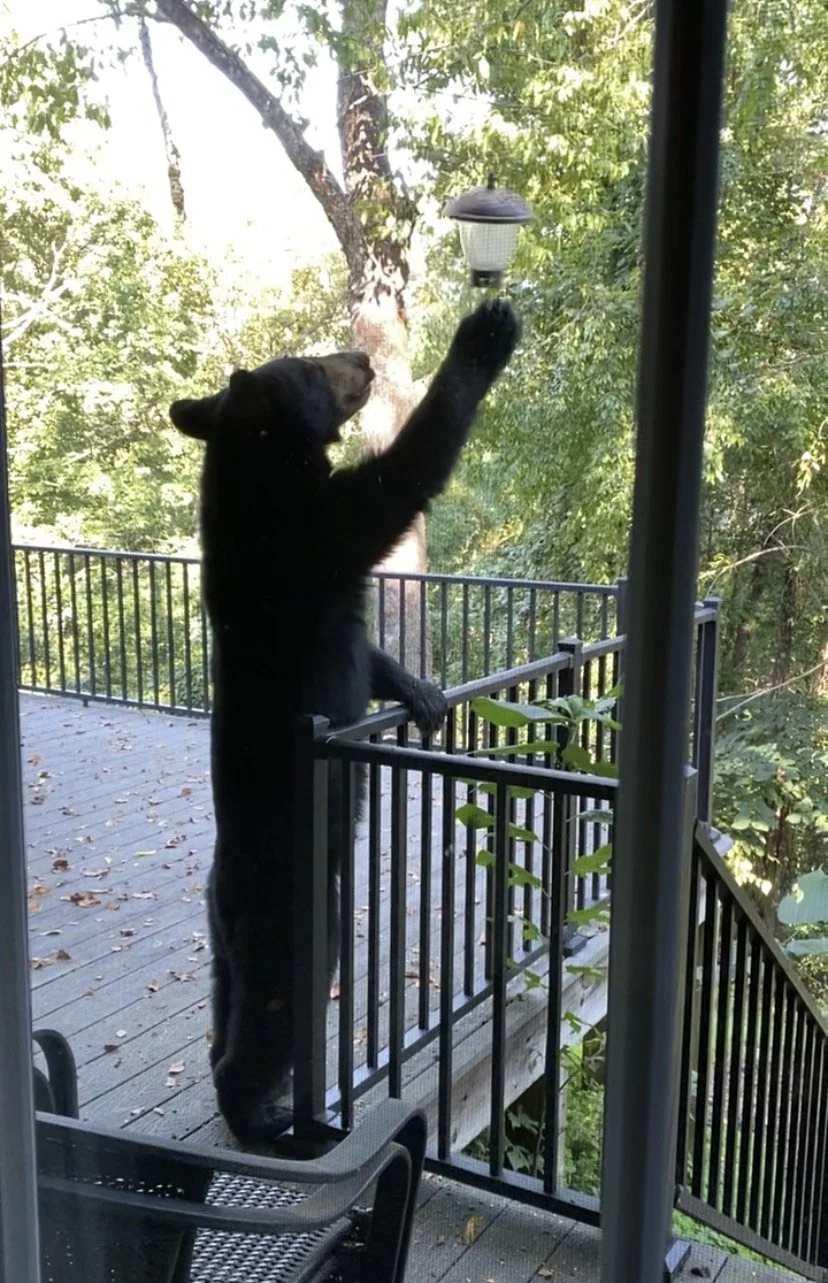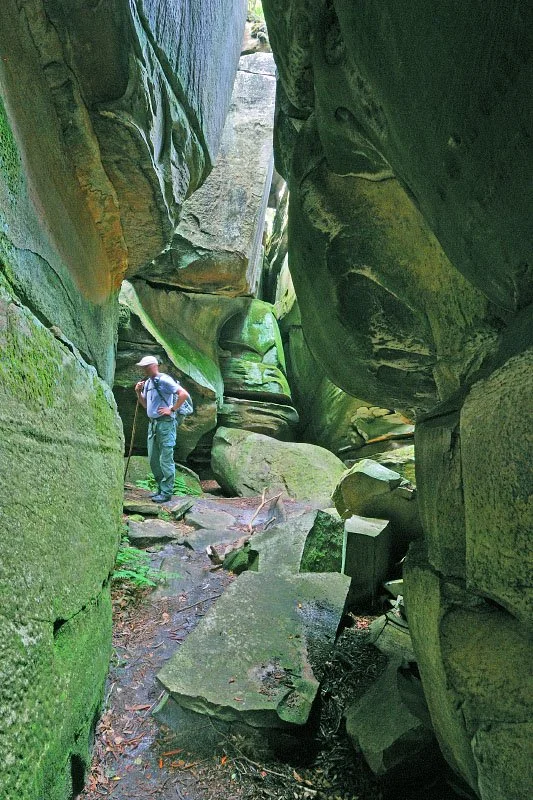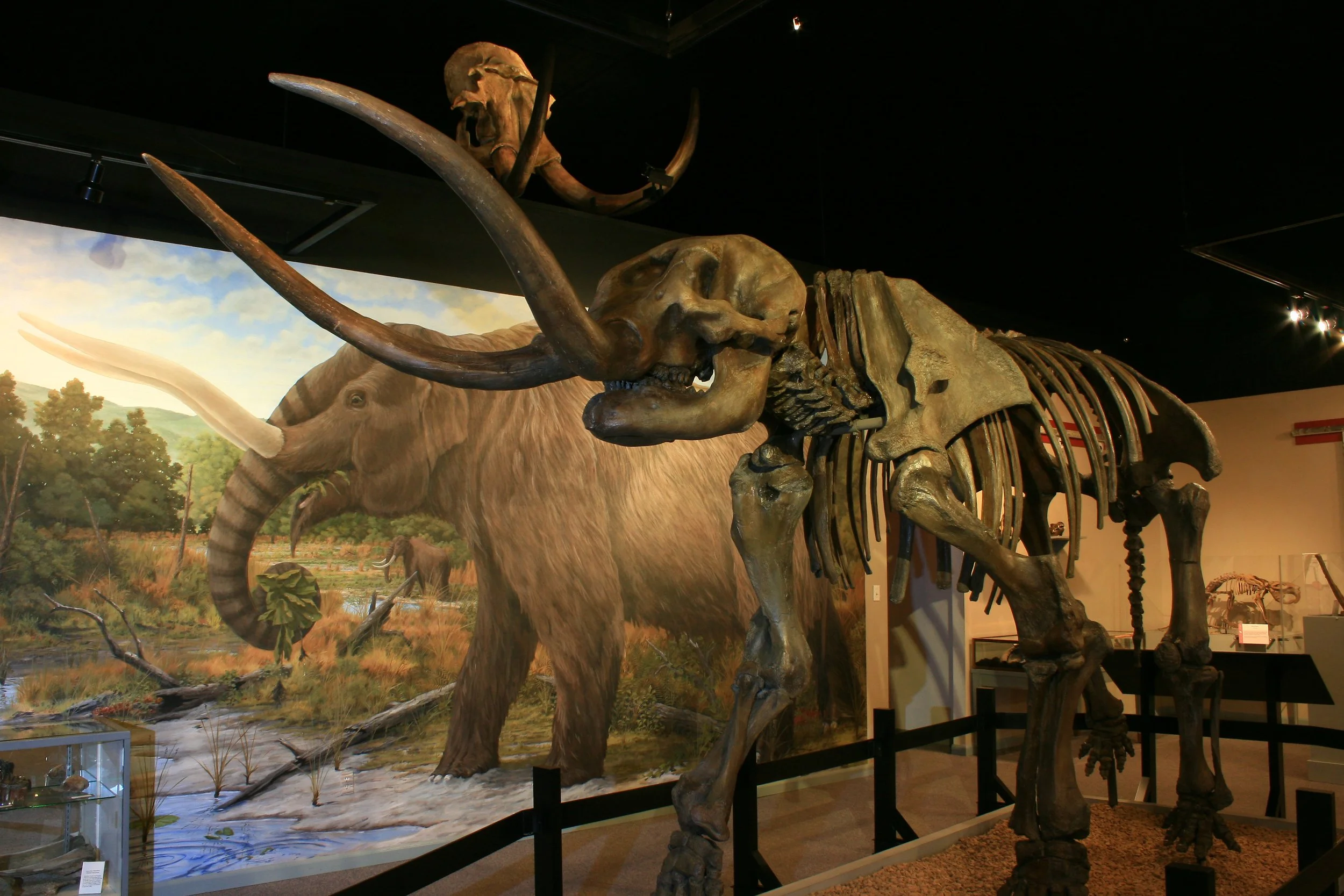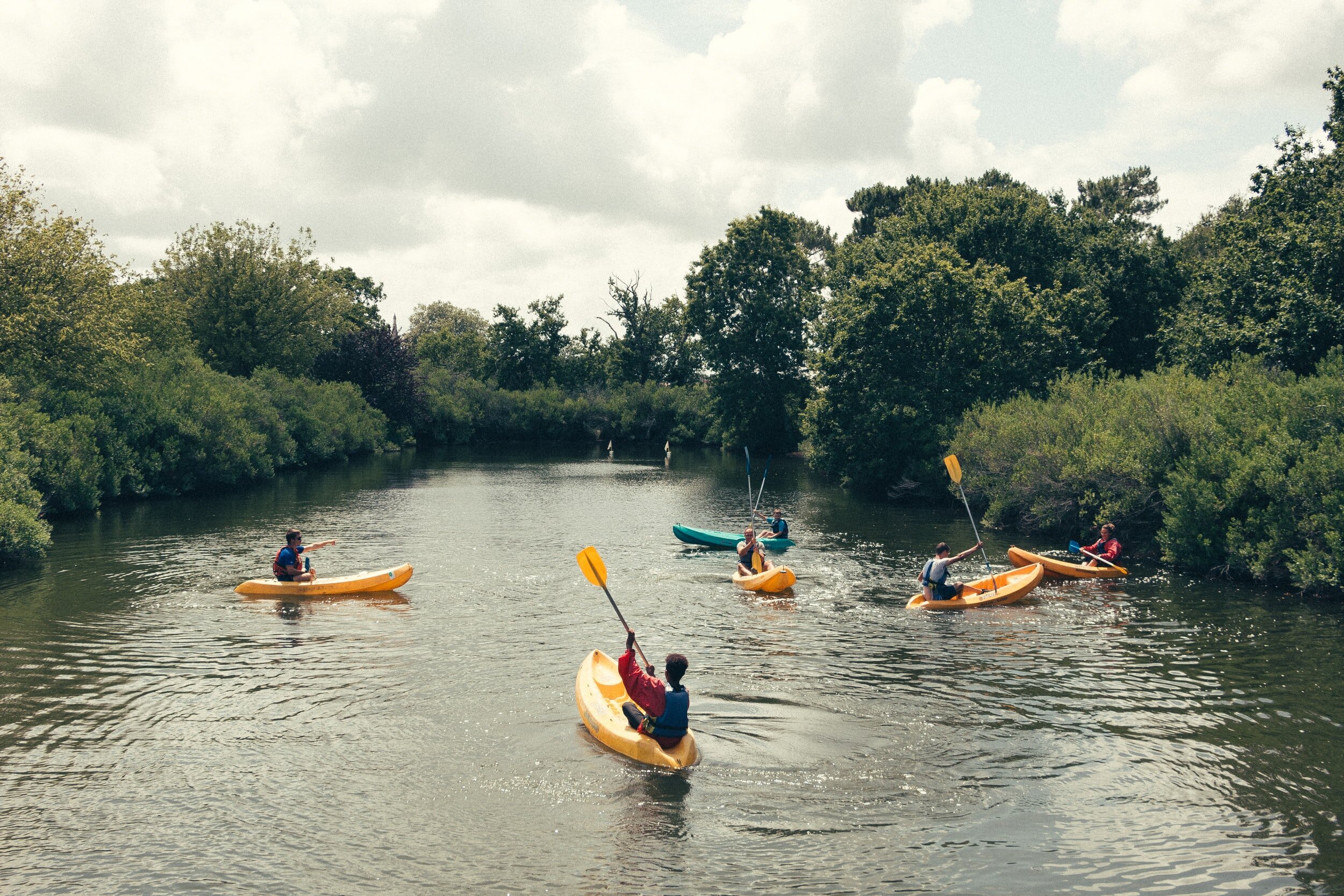
Outdoor Adventures
2024 Outdoor Adventures!
Stream Discovery
Friday, July 26, 10am-12noon
White’s Mill, 12314 White’s Mill Road, Abingdon, VA 24210
Upper Tennessee River Roundtable volunteers will show how to catch and identify invertebrates, the tiny creatures that live in healthy streams. This event is suitable for children, parents, and teachers. The workshop will be at White’s Mill near Abingdon. Rain date is Friday, August 2, at 10am.
Registration required. Register by Thursday, July 25, by calling 276-628-1600.
Area Fly Fishing Opportunities
Indoor classroom activity
Friday, July 26, 6:30-8:30pm
Room 240 Southwest Virginia Higher Ed Center, Abingdon, Virginia.
Bruce Wankel (a retired fly-fishing guide and owner of the Virginia Creeper Fly Shop) will present an overview of the excellent year-round fly-fishing opportunities in our region. He will describe essential equipment, tackle, and appropriate outerwear for fly fishing.
Using a slide show and live demonstrations, he will discuss fishing lines, knots, flies used in the area and fly pattern selection. Participants are welcome to try their hand tying a fly pattern. Attendees will learn to identify some of our area's common aquatic and terrestrial insects in the trout's diet and to recognize look-alike imitation trout flies.
Fly fishing combines science, craft, and sport. Where will the fish be? How do you tie a fly that imitates an insect? How do you cast to reach that pool where the fish are? In two events, learn how to do this.
Fly Fishing and Aquatic Entomology
Saturday, July 27, 8:30–11:00am
Meet at Virginia Creeper Fly Shop, 16501 Jeb Stuart Hwy, Abingdon.
(Directions: I-81 exit 19, onto Rt. 58 East, ½ mile on the left, Virginia Creeper Fly Shop)
Bruce Wankel (a retired fly-fishing guide and owner of the Virginia Creeper Fly Shop) will hold a short fly-casting lesson to allow those new to fly fishing a chance to cast a fly rod on the front lawn. From there the group will carpool to a nearby trout stream to learn about aquatic entomology (the natural live insects that are on the trout’s menu). Collect and compare aquatic insects to artificial fly patterns that Wankel discussed on Friday. (Attendance at the Friday program is not required for this event.) Wankel will conclude by demonstrating fly-casting methods used in trout streams. Suitable for children 8 and older. Raindate is Saturday, August 3.
Reservation is required. Call (276) 614-8964 no later than 5pm, Friday, July 26.
Snorkeling in Whitetop-Laurel Creek
with Blue Ridge Discovery Center
Sunday, July 28, 1:00-4:15 pm
Straight Branch Parking Lot, Mt. Rogers NRA
Join Blue Ridge Discovery Center and snorkel for native fish, aquatic insects and hellbenders on Whitetop-Laurel Creek. Wetsuits, snorkel masks, and changing tents are provided by BRDC, but bring a swimsuit and towels. Snorkeling is in 1-3 feet of water with no swimming necessary. Our creeks host an amazing diversity of colorful fish including sculpins, darters, dace, and trout. Before or after snorkeling, learn about the underwater habitat and fish ecology. Ages 6 and up. Limited to 20 participants.
Register and buy tickets at vahighlandsfestival.org by Friday, July 26. Fee $20. Sign up for either a session from 1 to 2:30 or 2:45 to 4:15. Rain date is Sunday, Aug 4.
DIRECTIONS TO STRAIGHT BRANCH PARKING LOT
From the Damascus caboose, follow 58 east about 4.5 miles. Turn toward Konnarock, not Mountain City, as you leave Damascus. After you enter Mt. Rogers Recreation Area, watch for a sign on the right that says Straight Branch. A gravel road leads down to a privy and parking lot, alongside the Virginia Creeper Trail. Meet the guides there.
Hike from Backbone Rock to Damascus
Monday, July 29, 9am-1pm
Meet at the Caboose at Damascus Town Park
This strenuous 7.3-mile hike with 1,540 feet in elevation gain on the Backbone Rock Trail and Appalachian Trail is recommended for experienced hikers in good physical condition. Shuttle to Backbone Rock to start the one-way hike back to Damascus.
Backbone Rock itself is interesting to see, and the hike, though challenging, offers many vistas along the Appalachian and Backbone Rock Trails. Bring water, hiking sticks and possibly raingear, and wear hiking boots or shoes. Shuttle fee is $5 payable as you board.
Registration is required. Register online by Saturday, July 28. Limited to 18 participants
Tree Identification Walk with Mark Archibald
Tuesday, July 30, 9-10am
William King Museum of Art
Become a dendrophile (tree lover) if you aren’t one already. Learn to identify trees by looking at leaf patterns, leaf shape, size, color and texture, flowers, fruit, bark, twigs, and overall shape and tree size. Learn how to use keys and field guides for identification. Also, find out about the ecological value of native trees and the effects of trees and forests on the land, wildlife, water quality, and people.
Mark Archibald is a Virginia Master Naturalist.
BearWise Talk by Katie Martin
Tuesday, July 30, 7:30pm
Executive Classroom SVHEC
Department of Wildlife Resources biologist Katie Martin talks about black bears in Virginia. Learn about black bear biology and their life history along with how you can be BearWise at home, at work, and while outdoors. BearWise is a nationwide program that educates citizens on black bears and how to prevent or reduce situations in which humans come into conflict with bears. Learn how to co-exist with black bears across the state, when traveling, and at your birdfeeder.
Raptors Over Southwest Virginia Talk
by Ron Harrington
Wednesday, July 31, 7:30pm
Executive Classroom SVHEC
Learn about the annual migration of hawks and other raptors as they travel by the Mendota Fire Tower on their way to their winter range. This is one of Nature's most impressive avian migrations.
Find out when and where to go to experience this natural phenomenon. Learn how these birds of prey migrate, where they're headed, and how far they travel. Find out the unique features of raptors compared to other birds, and pick up tips on how to distinguish between the more than 13 raptor species that make their perilous journey along the Clinch Mountain range each year. Most importantly, learn why studying raptors is so important and how you can become a “citizen scientist” by collecting data that may help protect these majestic creatures from becoming threatened or extinct.
Ron Harrington has served as the coordinator of the Mendota Hawk Watch for several years. He is an avid birder with many years of experience in counting raptors during their fall migration. He is a member of the Bristol Bird Club, the Cornell Lab of Ornithology, the Audubon Society, and the Nature Conservancy; and is a founding member of the Mendota (VA) Hawk Watch Association. A native of Sugar Grove, Virginia, he is a retired behavioral health executive and licensed professional mental health counselor.
In 2019, he was awarded the Bristol Bird Club's Stephen M. Russell Award for outstanding achievement in conservation, ornithology, and the general promotion of birdwatching.
Hike to the Great Channels
Thursday, Aug 1, 9am-4 pm
Meet at Hayters Gap Community Center, 7720 Hayters Gap Road, Saltville, VA 24370
Imagine squeezing between forty-foot-high stone walls. The Great Channels is a unique geologic formation composed of a network of deep sandstone crevices at the top of Clinch Mountain. The Great Channels is part of the Channels State Forest and Natural Area Preserve.
On the hike, participants will also see high-elevation forest communities and learn about the geology and ecology of the area. Participants should be prepared for a moderately-strenuous 6-mile round-trip hike. Hikers should wear sturdy hiking boots and bring lunch, plenty of water, and possibly rain gear.
Registration is required. Register online by Tuesday, July 30. Limit 20 participants.
For more information, see https://bit.ly/thegreatchannels
Day in Saltville
Friday, August 2
The salt of Saltville, Virginia has been important to mastodons, Native Americans, and the military from the War of 1812 through World War II.
Its well-field wetlands have plants and birds which flourish in saline waters.
9-10am
Birds and Flowers of the Saltville Well Fields
Food Country Parking Lot Saltville
The Well Fields in Saltville provide one of the most diverse and interesting birding experiences in our region. The Well Fields are designated as an "inland marsh," in fact the only inland marsh in the Virginia Mountains. As such, this location offers unique plants, fascinating geology, and a spectacular array of birds in every season. For our walk in August, birders are likely to encounter warblers, woodpeckers, herons, swallows, hawks, vireos, and vultures. With luck, we may encounter Virginia Rails, Great Egrets, Killdeer, Green Herons, White-eyed Vireos, Northern Parulas, Eastern Kingbirds, Yellow Warblers, and Bald Eagles. Bring your binoculars, a water bottle, sunscreen, and your curiosity for the natural world.
Robert Riggs has been an avid birder since third grade. A graduate of ETSU, he worked for the Department of Game and Inland Fisheries until retirement after which he joined Ohio State University as a research data field technician where he traveled the state gathering bird counts and habitat information that the university used for research on bird migration and land use. He is a member of the Virginia Society of Ornithology.
Monica Hoel serves on the board of the Virginia Society of Ornithology. An enthusiastic birder, she presents nature education programs to children, college students, and adults. She enjoys assisting with bird outings in the Saltville Well Fields. She is the alumni director at Emory & Henry College and an active member of the Holston Rivers Chapter of Virginia Master Naturalist.
Felicia Mitchell will talk about the unique plants of the Well Fields. She is a member of the Mt. Rogers Appalachian Trail Club, where she leads the occasional hike and helps with rare plant monitoring. An amateur birder, she enjoys the Saltville Well Fields and other regional area birding spots. She is retired from teaching English and creative writing at Emory & Henry College.
10:30-11:30am
Geology: How Saltville Came to Be with Dan Manweiler
Museum of Middle Appalachians Conference Room
For centuries, humans have made use of Saltville’s brine marshes, formed from sea water trapped and evaporating in a hot, arid, climate some 300 million years ago. Saltville’s earliest history is a story of plate tectonics, of the earth's crust in a constant worldwide shuffle above its mantle. Learn how plate tectonics played a role in everything that Saltville became.
Dan Manweiler is a retired environmental Land Protection Manager with the Virginia Department of Environmental Quality. Before this, he was an exploration supervisor for Pittston’s Clinchfield Coal Company in Dickenson County, Va. He holds a degree in Geological Sciences from Virginia Tech.
10am-4pm
Museum of Middle Appalachians
123 Palmer Ave
Admission $3-5
Saltville has been important from the Ice Age through the Civil War to the present. The Museum of the Middle Appalachians has exhibits of woolly mammoth and mastodon fossils that have been discovered in Saltville, exhibits of the history of salt extraction, and exhibits showing Saltville’s importance during the Civil War. Touring the museum and viewing its videos will provide a larger context to understand Saltville’s history and unique natural characteristics.
For more information about the Museum of the Middle Appalachians, see museumofthemiddleappalachians.org or call 276-496-3633.
Tour of Saltville on your own
Better understand the history of Saltville by touring on your own several historic sites. A map is available at the Museum of Middle Appalachians. See Madame Russell United Methodist Church, St. Paul Episcopal Church, Elizabeth Cemetery, William King-Stuart Cabin, W. A. Stuart House, the Salt Park, the paleontological dig site, and the Civil War Battlefield.
Buzzard Rock Hike on Whitetop
Saturday, Aug. 3, 9am-1pm
Meet at Lowes at Exit 19 in Abingdon or the DamascusTrail Center to carpool.
Whitetop Mountain at 5,525 feet has spectacular views of Clinch Mountain and North Carolina’s Blue Ridge Mountains. Led by Doug Levin of the Mt. Rogers Appalachian Trail Club, the two-mile round-trip hike along the Appalachian Trail crosses the open fields of a bald. Hikers should wear sturdy hiking boots and bring lunch, plenty of water, binoculars, sunscreen, and possibly rain gear.
Registration is required. Register online by Thursday, Aug 1.
The hike will be canceled in bad weather. If unsure, call the Damascus Trail Center on Saturday morning at 276-323-3046.
Links to websites for area outdoor attractions
Where are wild ponies. mountain balds, great places to hike, museums related to the outdoors, good fishing places, and places just to stretch your legs? This link takes you to a map that shows you places locals go. Click on the pin to see the place, and then on the box beside the name to link to its website. The farthest outdoor locations are not more than one and a half hours from Abingdon.
Abingdon Outdoor Adventure Activity Book
Monday-Friday, July 25-29 from 10am-2pm
Barter Green, Youth Tent Become a VHF Outdoor Adventurer by picking up an Outdoor Adventurer Activity Book and completing activities as you go through Abingdon. Learn about Abingdon’s parks—for butterflies and munchkins. Find out about wyes, muster grounds, and two kinds of Virginia Creepers.
Bring your completed booklet to the Youth Tent to receive your official Abingdon Outdoor Adventurer button!

“Those of us who live in this area know what treasures the Appalachian Trail, the Virginia Creeper Trail, and the Mt. Rogers Recreation Area are. There are other places less well known, such as the Channels and Pinnacle Natural Area Preserves. We try to share the ‘hidden treasures’ of these places with our Festival visitors.”
– Merry Jennings, Outdoors Chair





